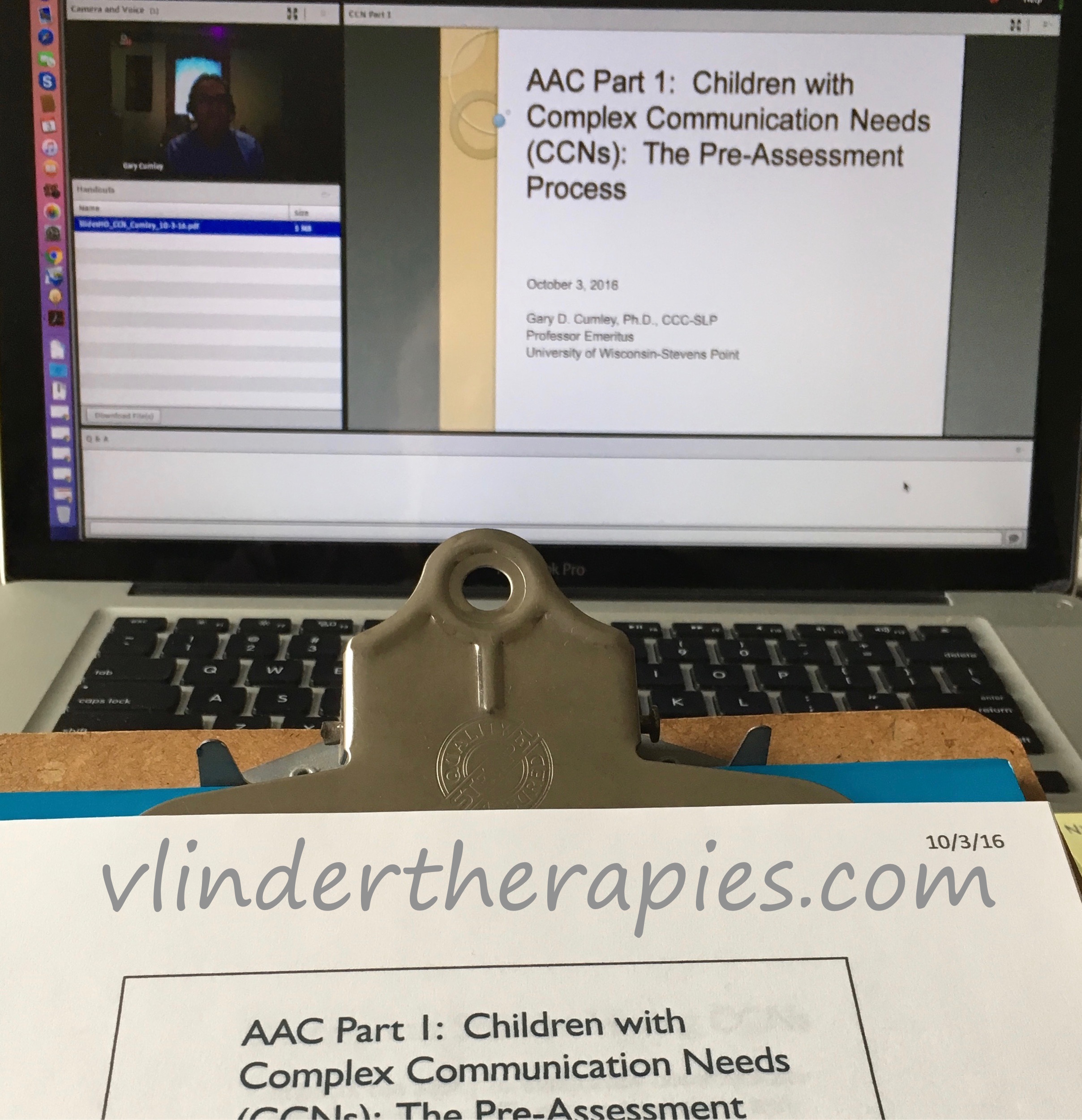2016 Nancy McKinley Lecture Series: Topics in AAC {Day 1}
October is AAC Awareness Month! All this week I am attending a live webinar series on SpeechPathology.com called:
2016 Nancy McKinley Lecture Series: Topics in AAC

Day 1
AAC Part 1: Children with Complex Communication Needs: The Pre-Assessment Process
Presenter: Gary D. Cumley, PhD, CCC-SLP
Today, University of Wisconsin-Stevens Point professor emeritus Gary Cumley, PhD, CCC-SLP presented on the AAC "pre-assessment process". Here are a few of my "take aways" from today's lecture. Most was review (which is never a bad thing), but there are usually new little gems to remember as well.
Pre-assessment is one of the most important steps in the AAC assessment process
AAC systems are simply tools (no-, low-, mid-, or high-tech, but still just tools) to successfully complete communication.
** Every child (or adult) with CCN needs a toolbox with various communication tools in it! **
SUCCESS = MOTIVATION and COMMUNICATION = POWER (but first, need to experience successful communication to feel motivated to communicate, which then leads to realizing the power of communication)
EVALUATION versus ASSESSMENT: an evaluation is a group of activities conducted to see if a student qualifies for special services; an assessment is a group of activities carried out to determine a student's specific needs
...the AAC assessment as part of an AT assessment, for AAC always falls under the "Assistive Technology" umbrella
Consider Standardized versus Criterion Referenced Assessments (criterion referenced is usually better suited to individuals with CCN.
"Functional" should be at the forefront of our thinking!
"Iceberg concept": look below the surface, beyond the obvious, and think outside of the box (this is one reason why it is so important to use a TEAM approach).
The Team should include someone who is knowledgeable of:
- the child
- the curriculum
- language
- the environment
- motor control
- etc, etc., etc.
Use the SETT Process to gather pre-assessment information (observe and ask questions).
S: student information
E: environmental information
T: task(s) information
T: tools(s) information
AAC assessment is a very complex process, as it involves challenges regarding one or more of the following (and to varying degrees): physical abilities, speech intelligibility, intellectual impairment, sensory differences/needs.
The goal is always: supporting the functional communication needs of the individual to be a successful and efficient AAC communicator (with an eye to their current and future needs).
Check back tomorrow for a summary of Day 2!
Here are links to my summaries for the other lectures in the series this week:
 Monday, October 3, 2016 at 5:06PM
Monday, October 3, 2016 at 5:06PM  Post a Comment →
Post a Comment →  AAC,
AAC,  AAC Awareness Month | in
AAC Awareness Month | in  AAC
AAC
Reader Comments